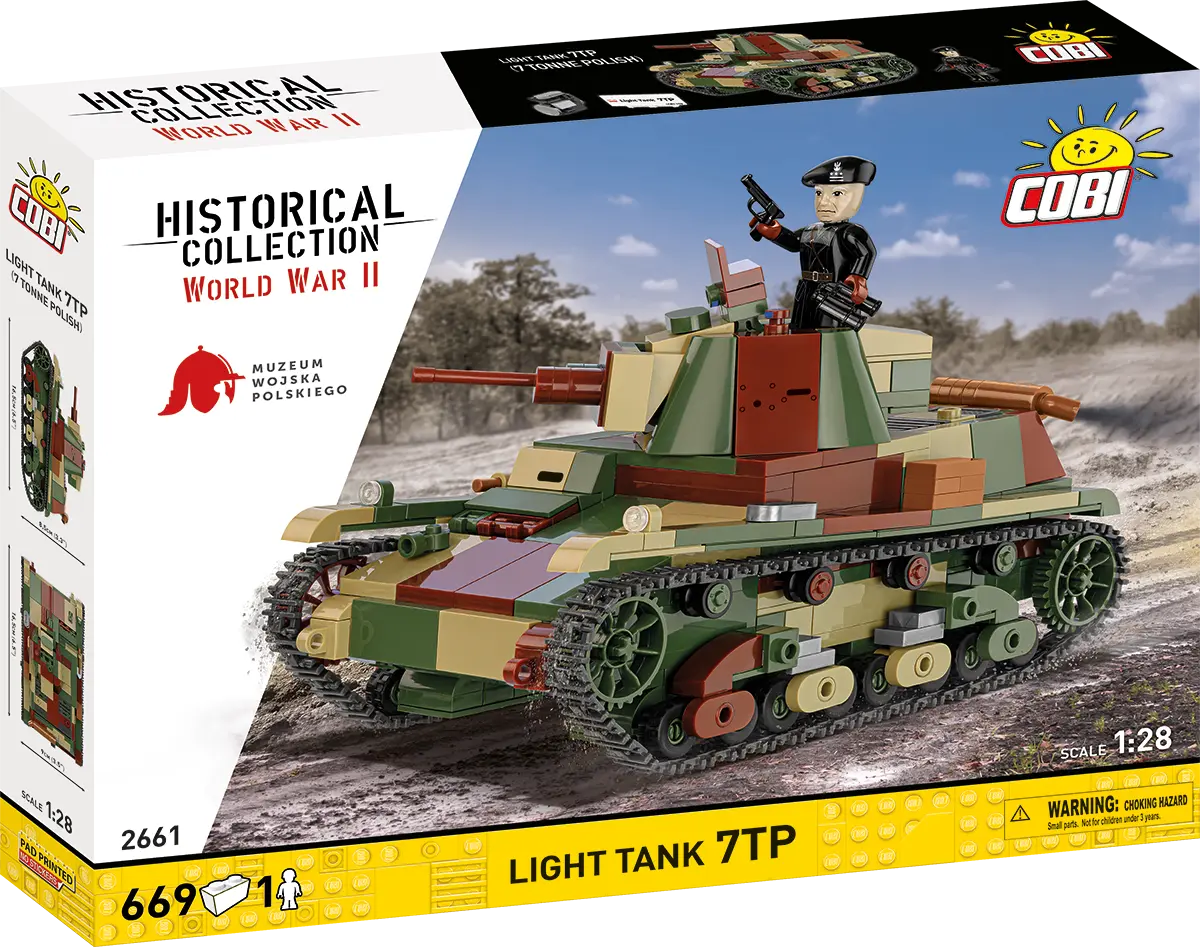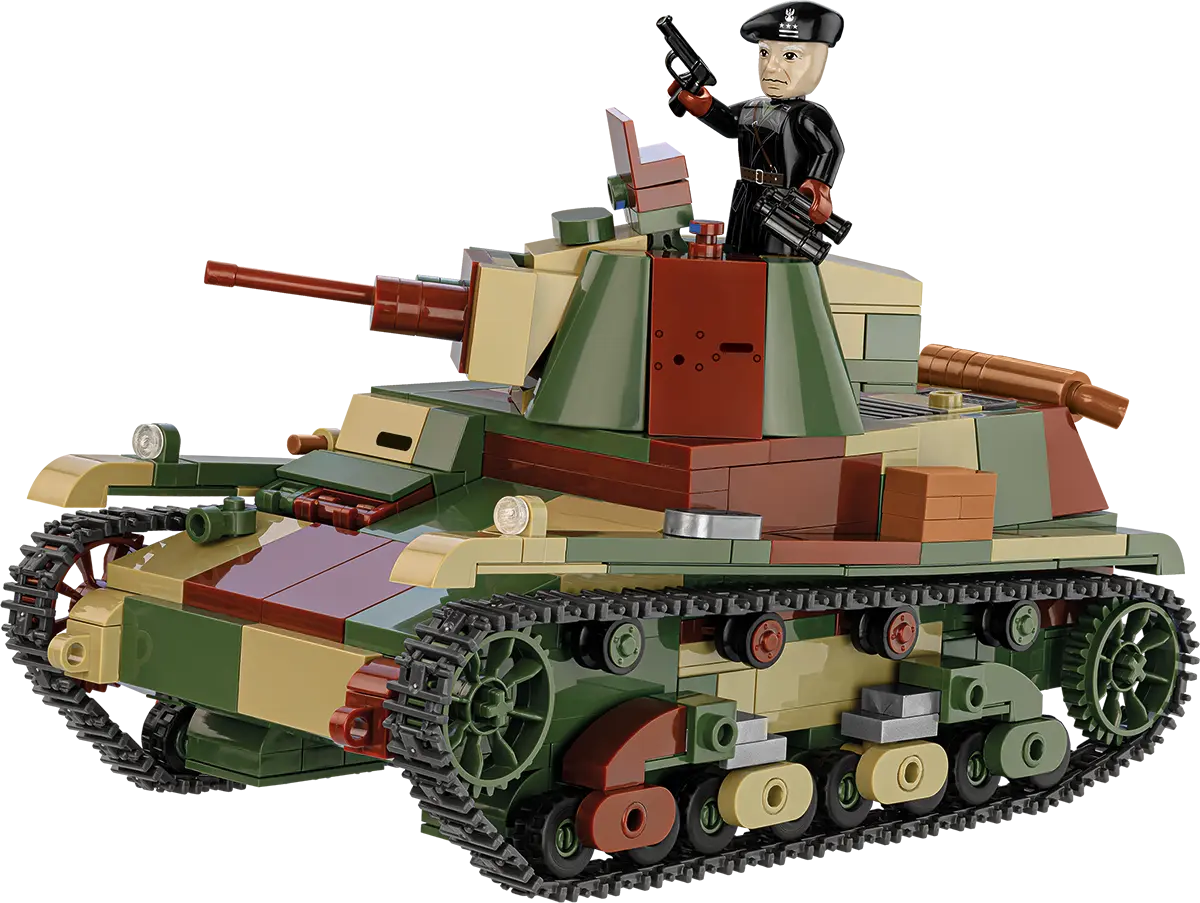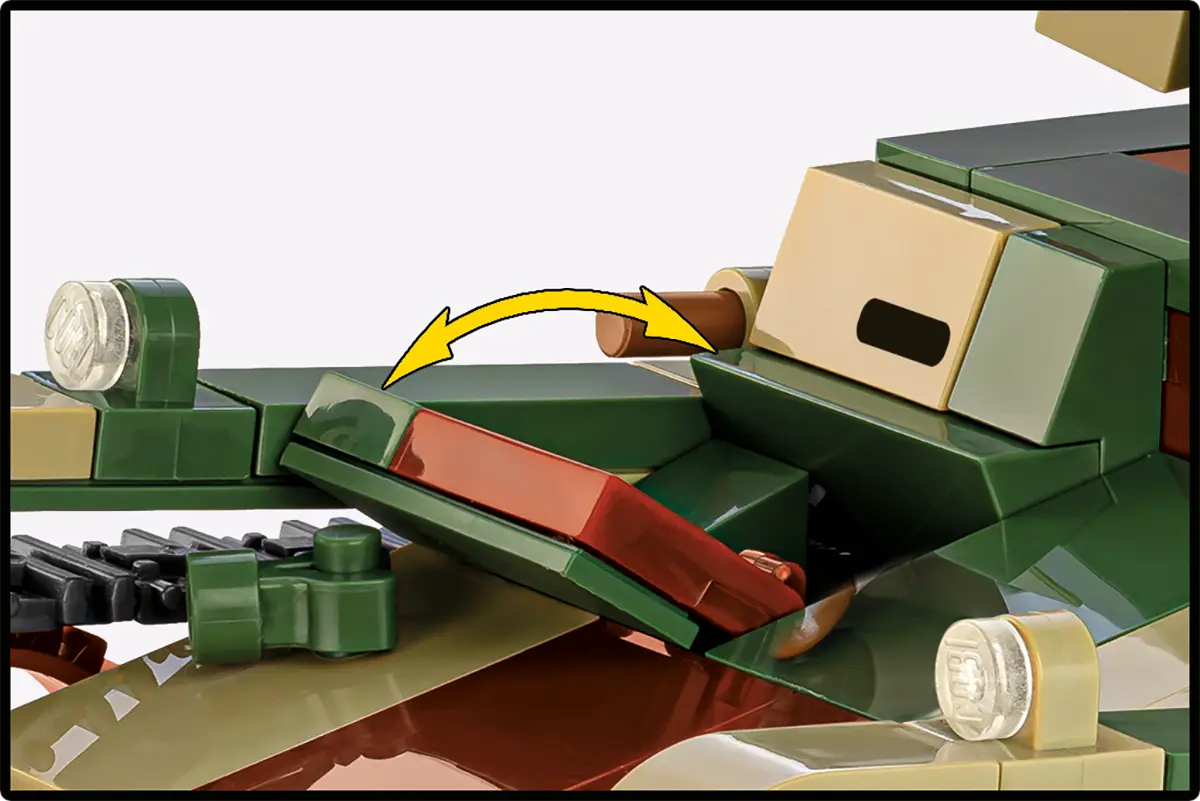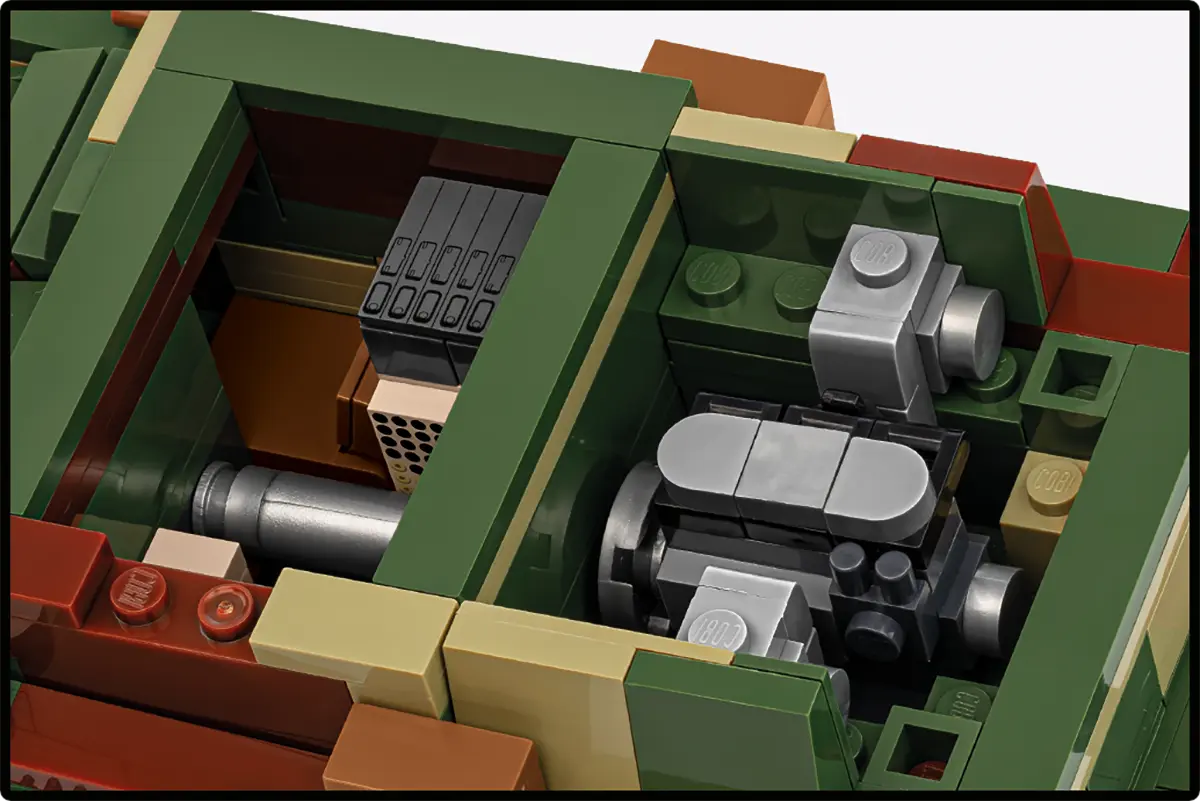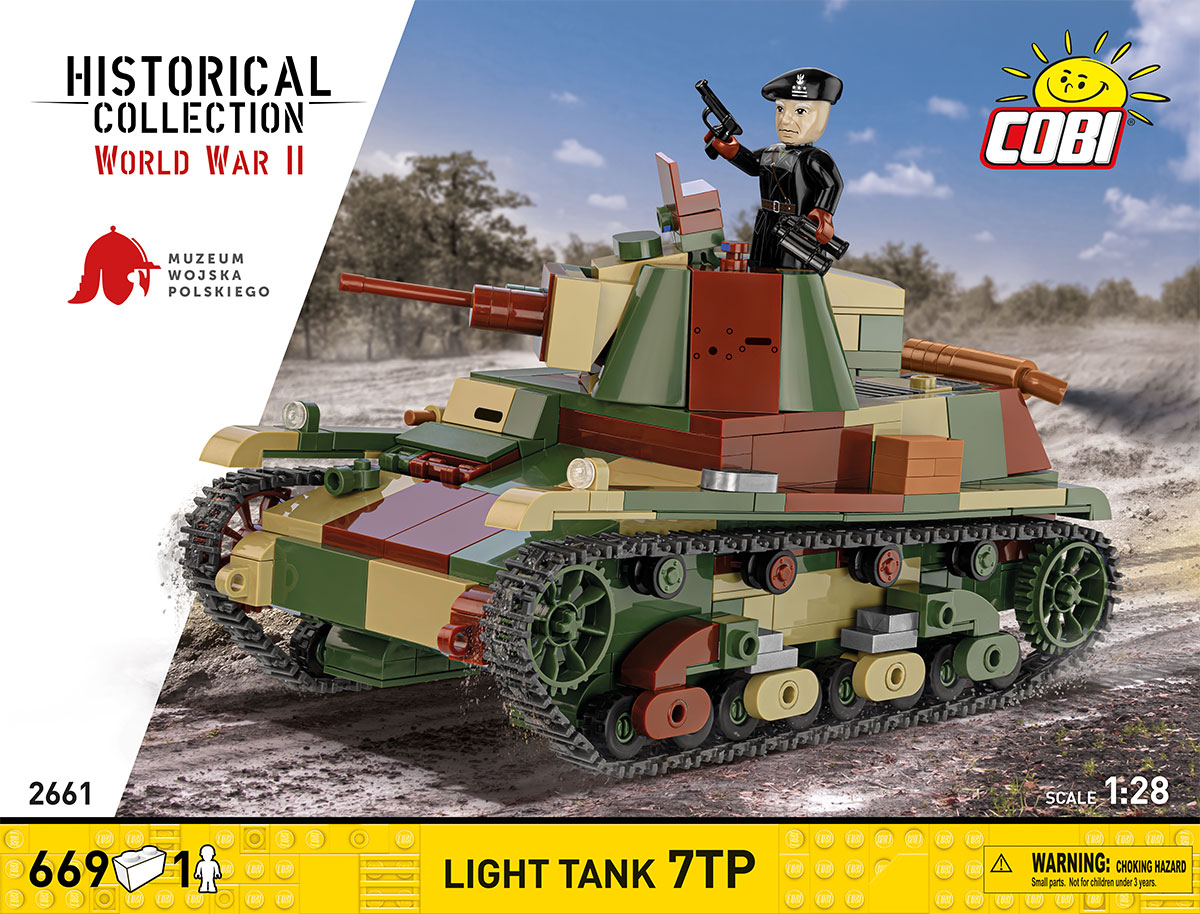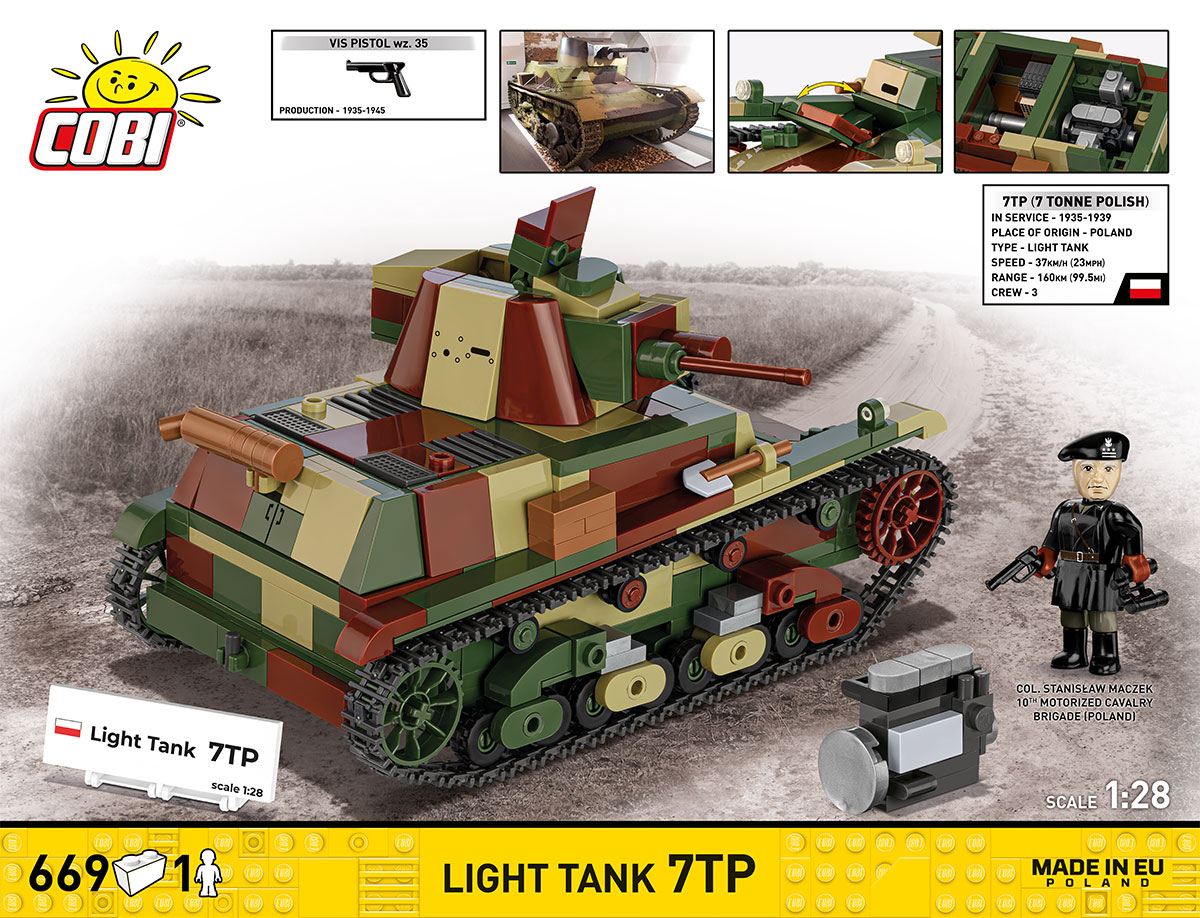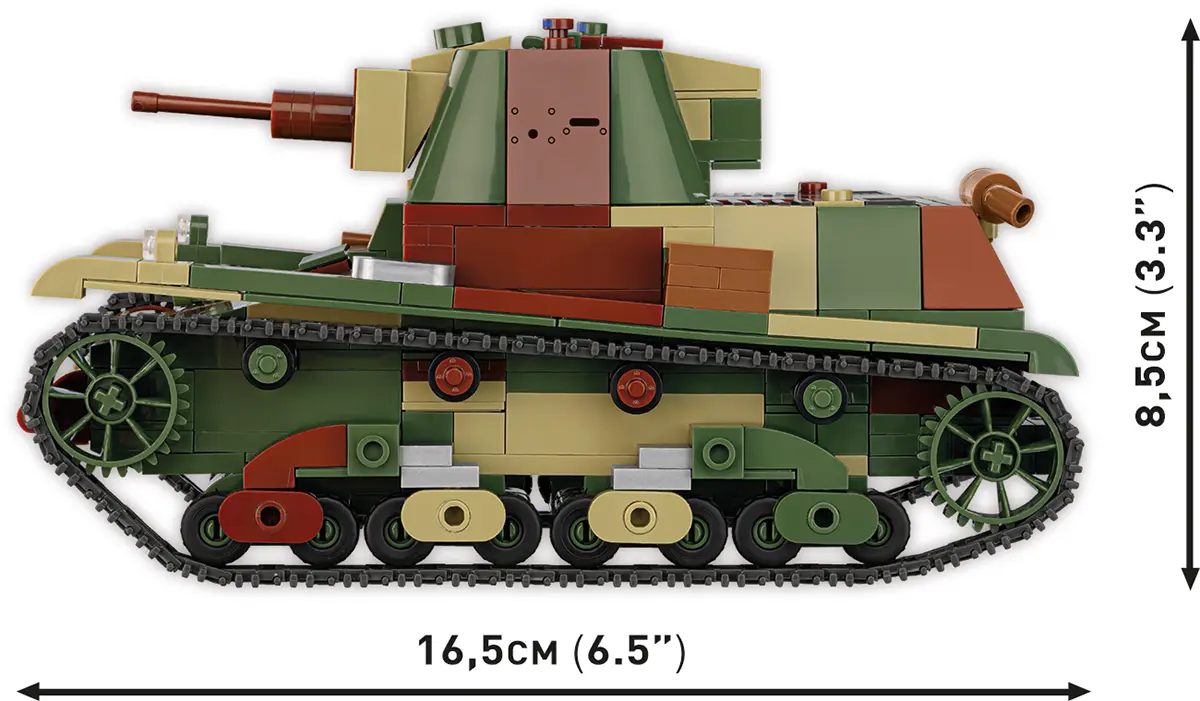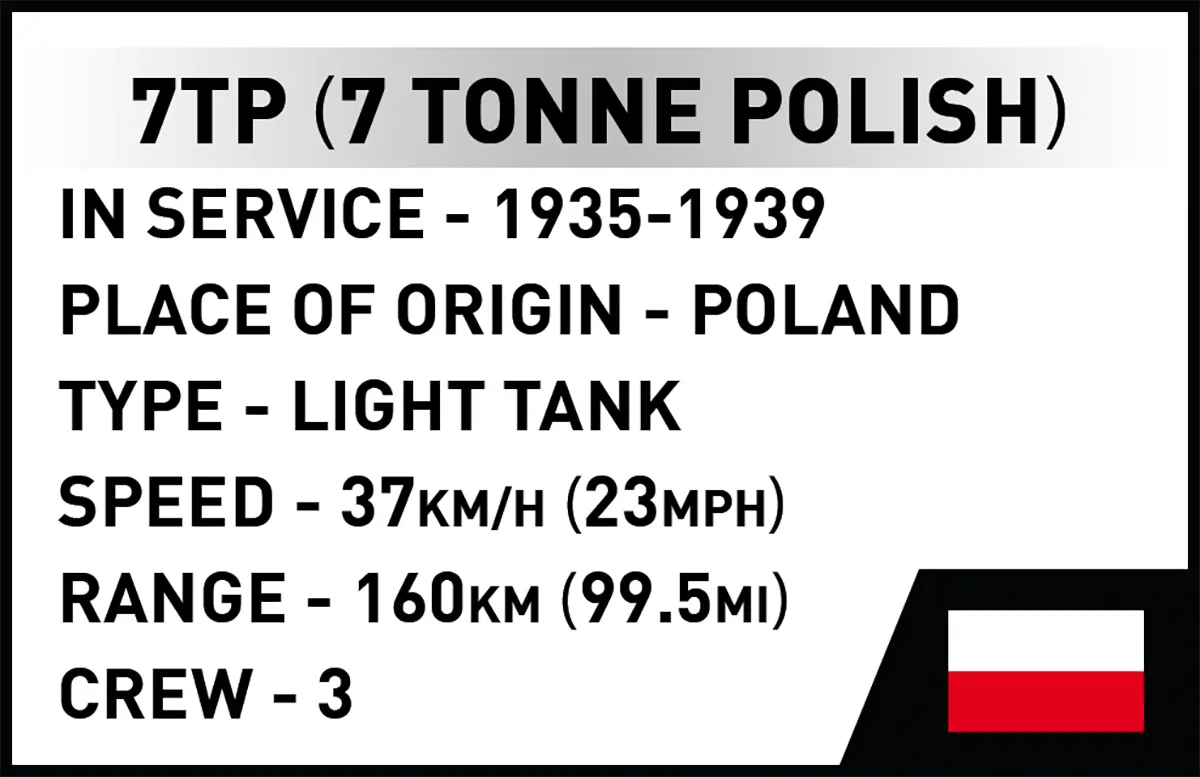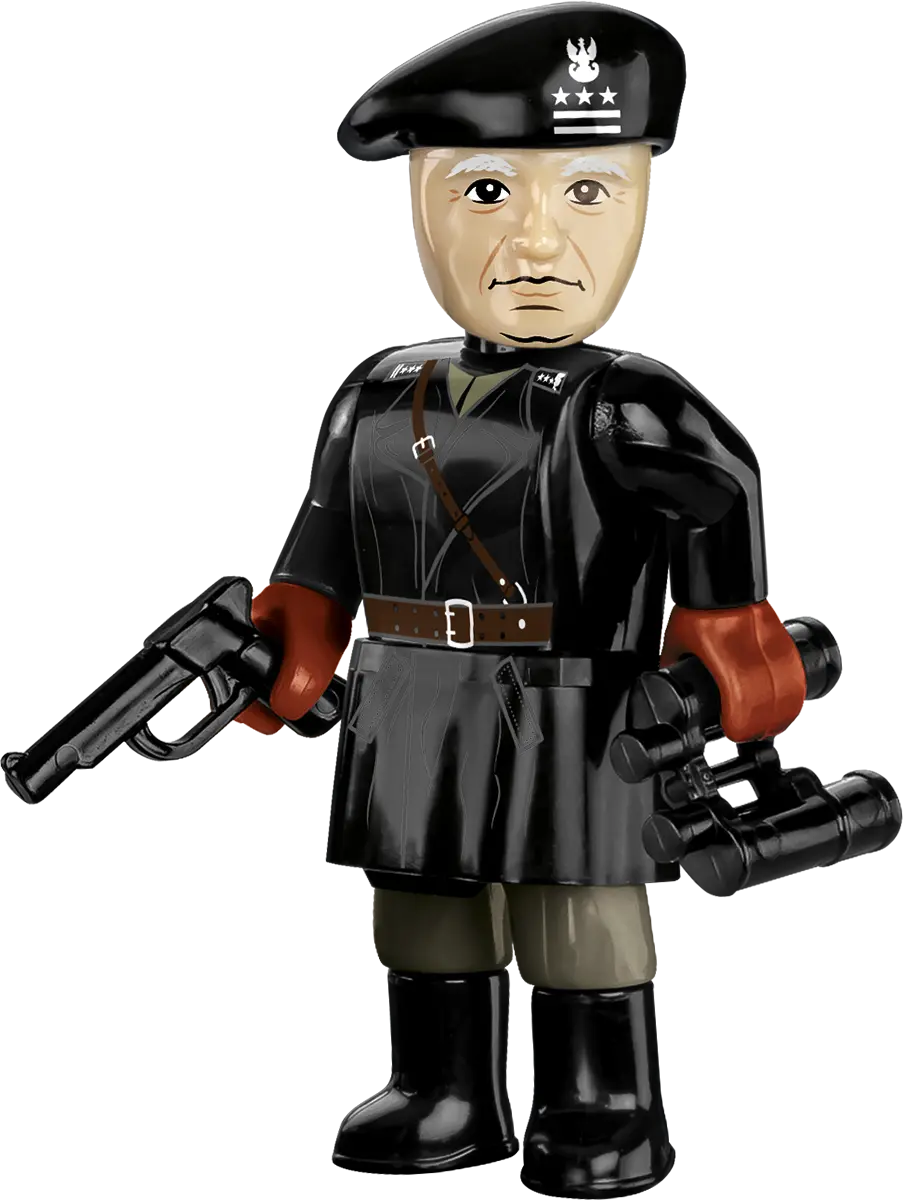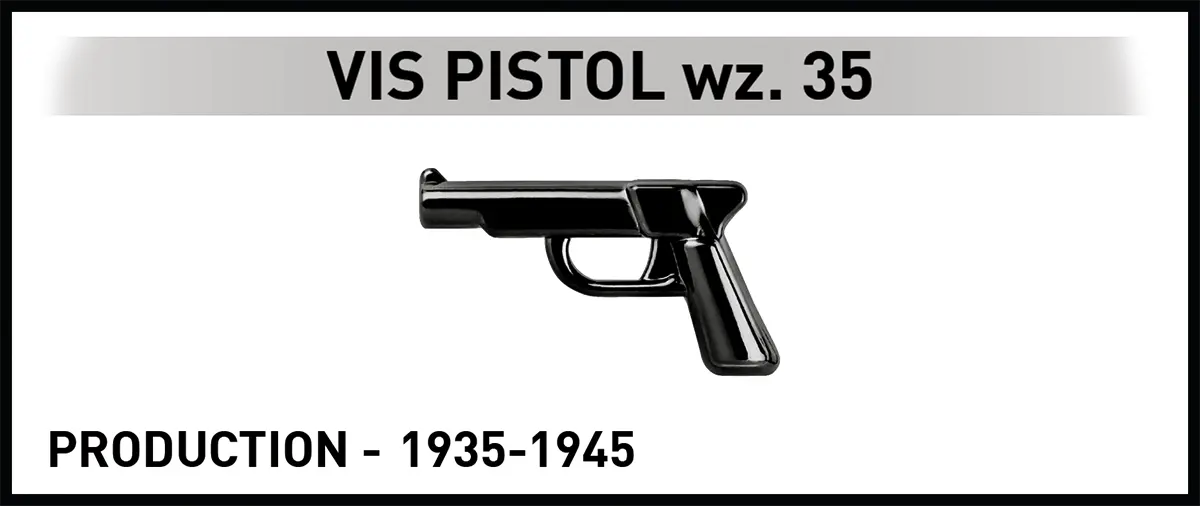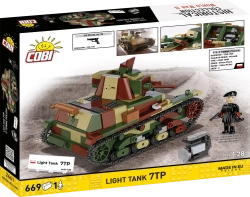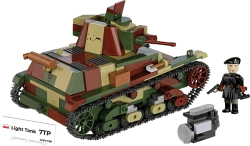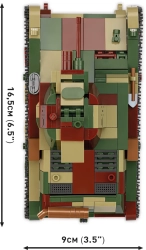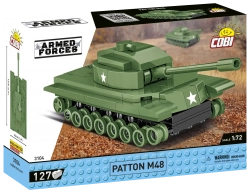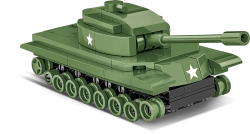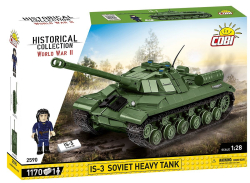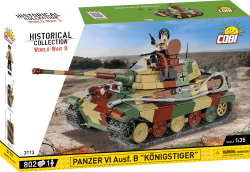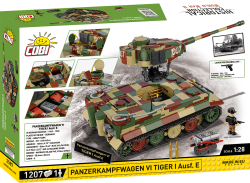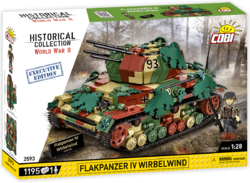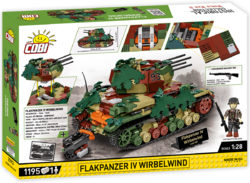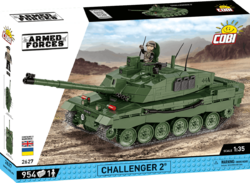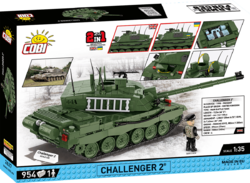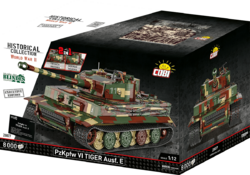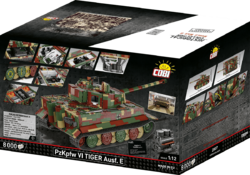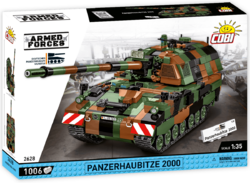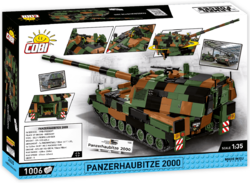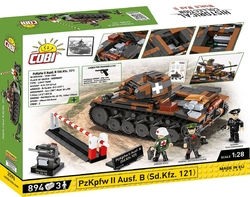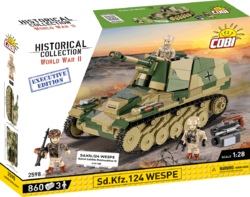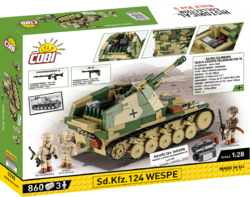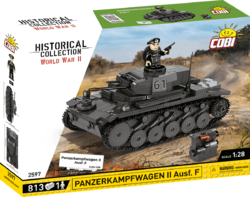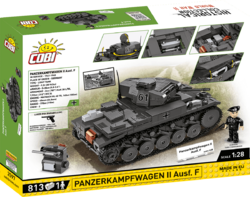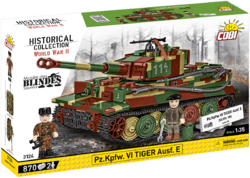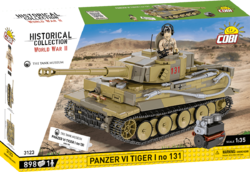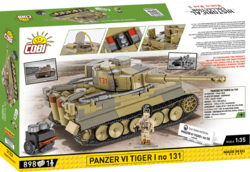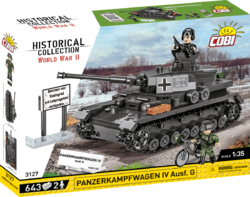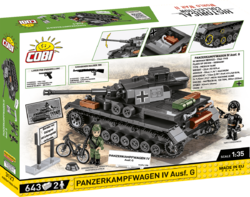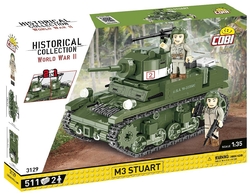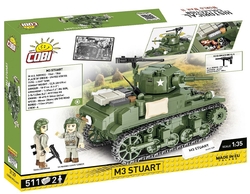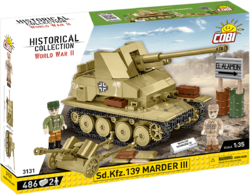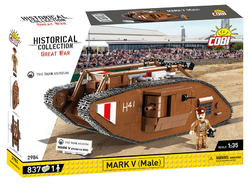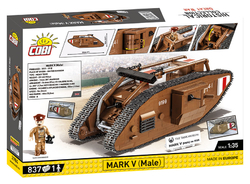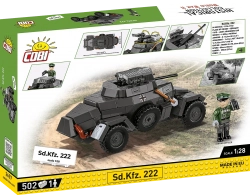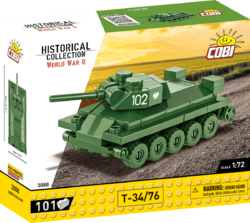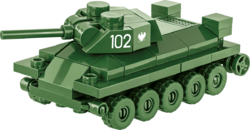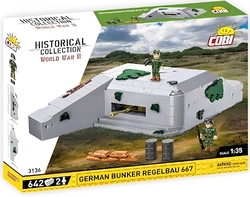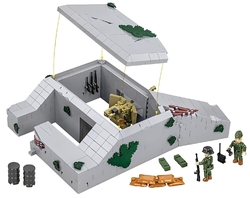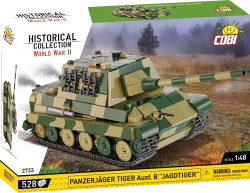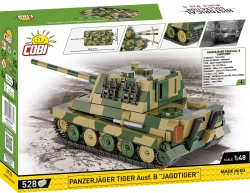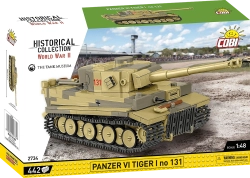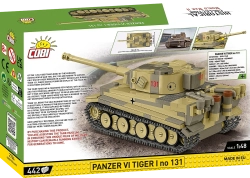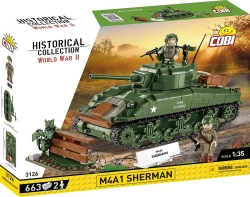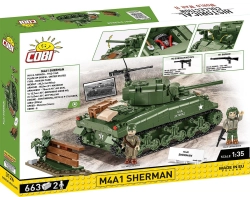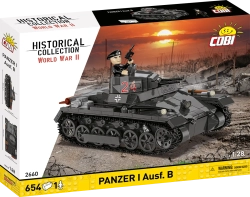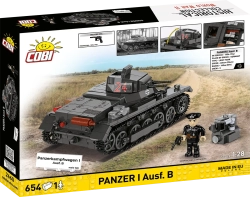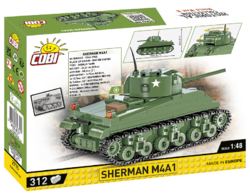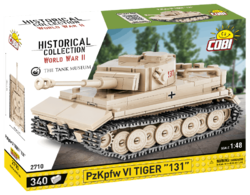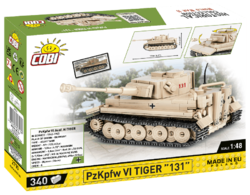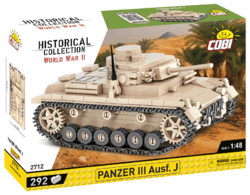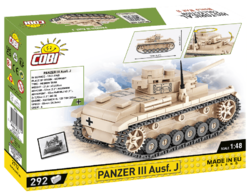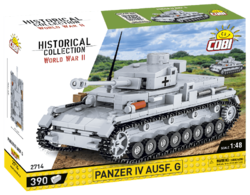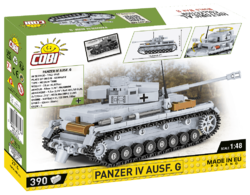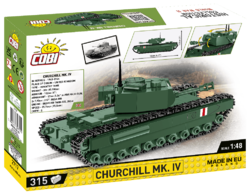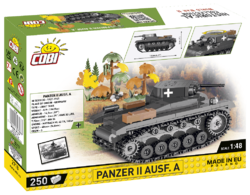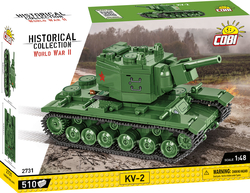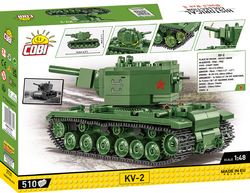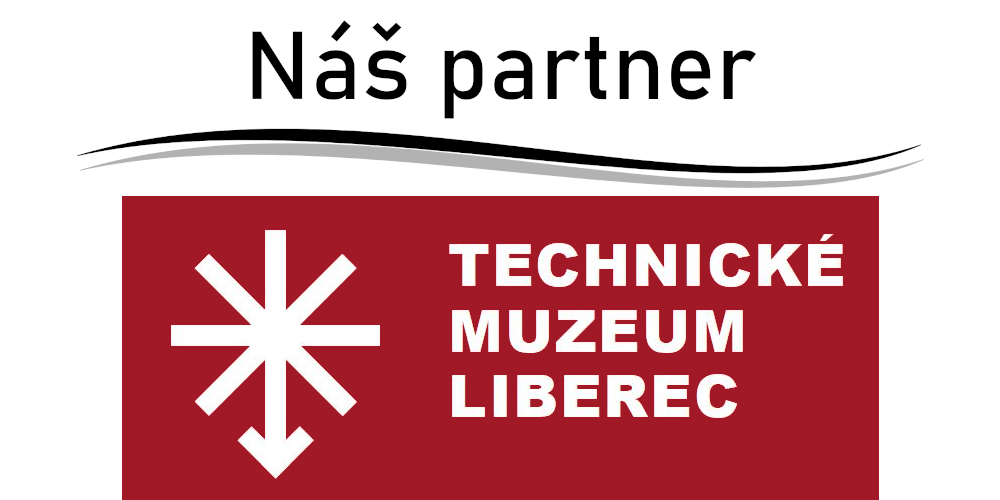A kit of a model of a Polish light tank 7TP. The assembled model has a rotating turret, opening hatches for seating a figure and functional tracks with which the model can be easily moved. The package also includes a figure of Polish General Stanisław Maczek in a period military coat armed with a VIS wz. 35 pistol. The tank's engine can be removed and displayed separately.
Show more
0 %
(0 Ranking)
993 Kč
pcs
Add to Cart
In stock - ready to ship
| List Number: | COBI-2661 |
| EAN: | 5902251026615 |
| Warranty: | 24 months |
| Manufacturer: | COBI |
| Loyalty Points: | 10 |
| Price excluding VAT: | 820,64 Kč |
Description
Parametres
Files and Links
Discussion
Reviews

Did you know: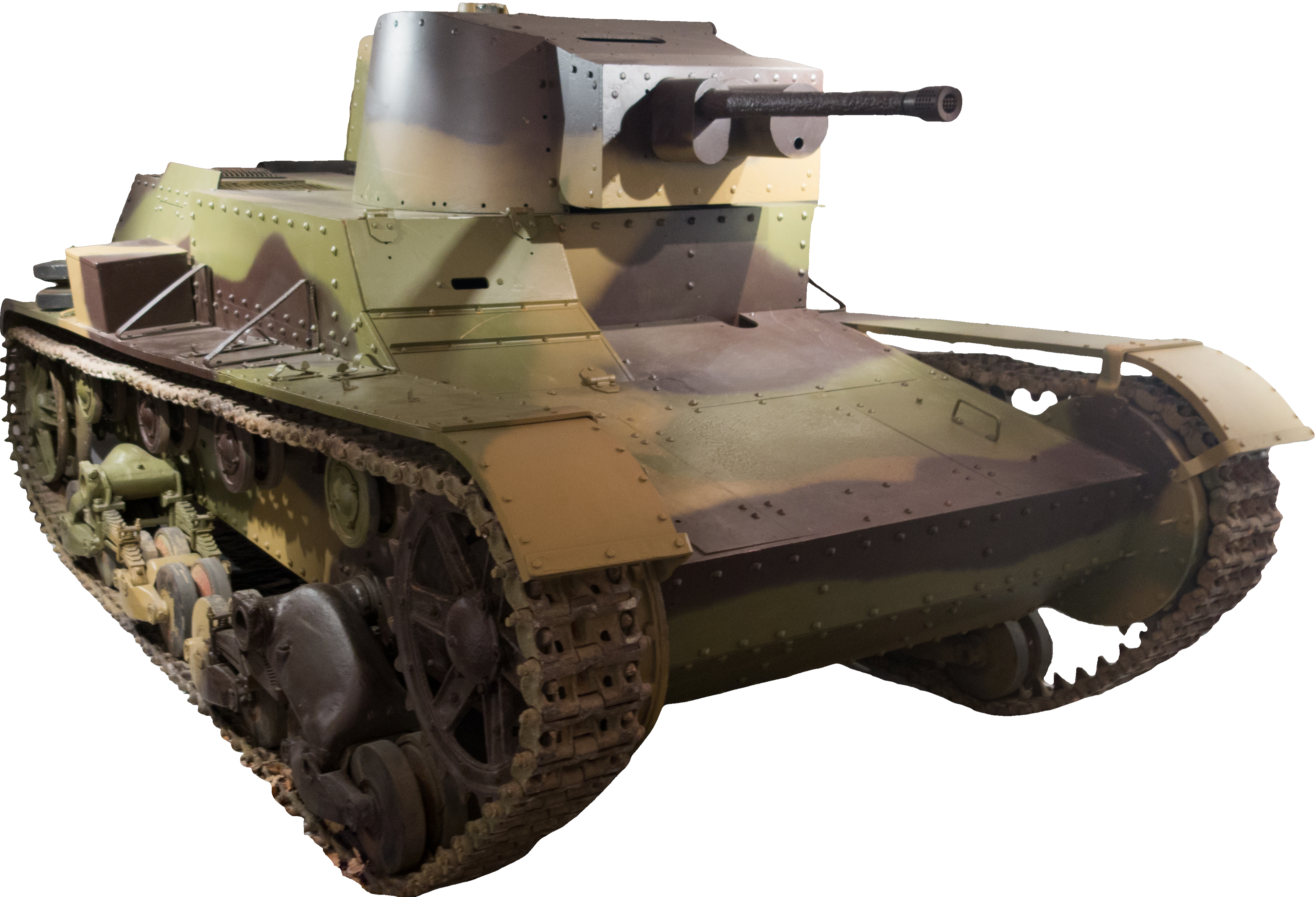
- The young Polish state needed to build a new army in the interwar period, but the poor country did not have enough resources for the complete development of its own machine, so the British Vickers E tank served as a model.
- Based on the experience of World War I, the tank was supposed to be light and, above all, highly mobile. This was significantly supported by the new PZlnż 235 diesel engine, which for its time was powerful and durable enough. The power unit was so interesting that in 1935 the Soviet Union copied it without consent and without paying license fees in order to install it in its BT-7 tanks.
- The first 25 units produced were equipped with a twin-turret design fitted with two machine guns. In later serial production, a more modern single-turret solution with a mounted Bofors 30 mm cannon was preferred. The armor was also reinforced up to 17 mm.
- The exact number of units produced is unknown. The probable number is about 156, including the twin-turret version.
- A unique feature of the tank was the Gundlach periscope developed in Poland, which allowed the commander a 360° view of the battlefield without rotating the turret.
- 7TP tanks play an important role in Polish history. This very type of tank stood against Nazi Germany in the first days of World War II and, it must be said, was a strong opponent.
- According to surviving records, the clash took place on the very first day of the German invasion. In the wooded area around the village of Mokra, a German reconnaissance unit of the 4th Panzer Division encountered a well-prepared Polish defensive position on the road from Klobuck to Mstów. Part of the Polish defense was also a 7TP tank with the most modern 37 mm Bofors gun. The battle ended in disaster for the Germans. Polish defenders managed to destroy several Panzer I and Panzer II tanks as well as many reconnaissance vehicles. This battle at Mokra is still considered one of the most successful Polish tank actions in the first hours of the war. However, it was not enough to stop the German war machine. The Polish army suffered from a severe shortage of fuel and chaotic command of widely dispersed units.
- During the advancing battles, the Third Reich captured 20 7TP tanks, and later, after the invasion of Poland, the Soviet Union also captured 4 tanks.
- After the end of the war, no preserved example remained in Poland. With the support of the Presidential Palace, only one 7TP tank was reconstructed from fragments, which can now be seen at the Polish Army Museum in Warsaw.
Technical specifications of the 7TP:
- dimensions: length 4.87 m, width 2.40 m, height 2.12 m
- weight 9,990 kg
- armor 5–17 mm
- power unit: PZlnż diesel engine, 8550 cm³, output 81 kW
- number of gears 5 + 1
- maximum speed: on road 37 km/h, off-road 15 km/h
- range 160 km on road, 130 km off-road
- fuel tank capacity 110 l
- fuel consumption 80 l/100 km on road and 100 l/100 km off-road
- main armament: Bofors Mk. 37 cannon, 37 mm caliber (ammo supply 80 rounds)
- secondary armament: 1x machine gun Mk. 30, 7.92 mm caliber
- crew 3 men
- number of units produced: 132
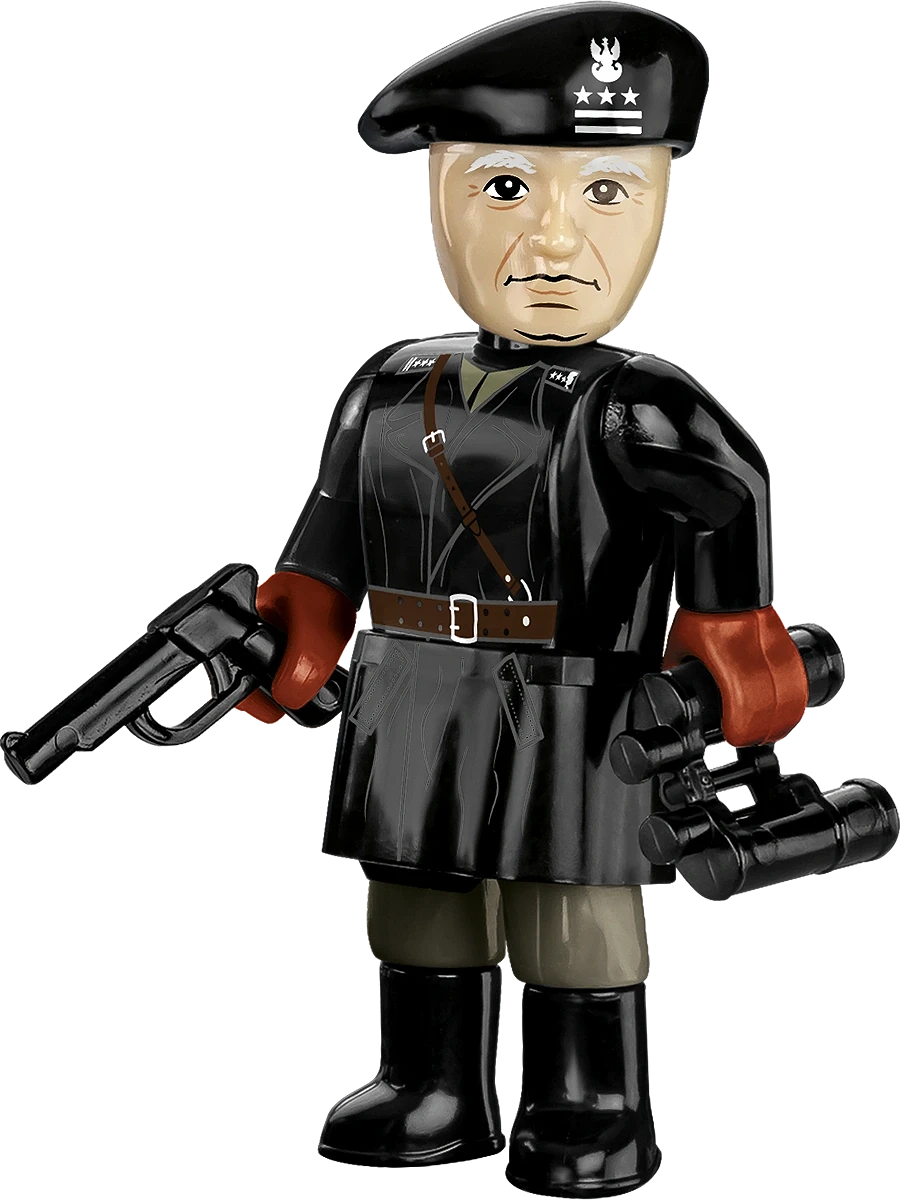
From the memoirs of General Stanislaw Maczek:
“We were defeated. The only way to continue the fight against monstrous Nazism was to escape to France. I managed to reach Paris with my family. The very next day at 10 a.m. I reported to the French command. Surprisingly, I was treated with a certain leniency mixed with considerable superiority and slight contempt over our defeat. The quick capitulation of France was another tragedy, but to my satisfaction, the French were finally silenced.”
| Number of figurines | 1 pcs |
|---|---|
| Scale | 1 : 28 |
| Dimensions after assembly | 16,5 x 9 x 8,5 cm |
| Number of pieces | 669 pcs |
| Contains luminous blocks | No |
| Material | Plastic |
| Collection | World War II |
| Compatible with other brand of kits | Yes |
Discussion is empty.
There is no review for product yet









